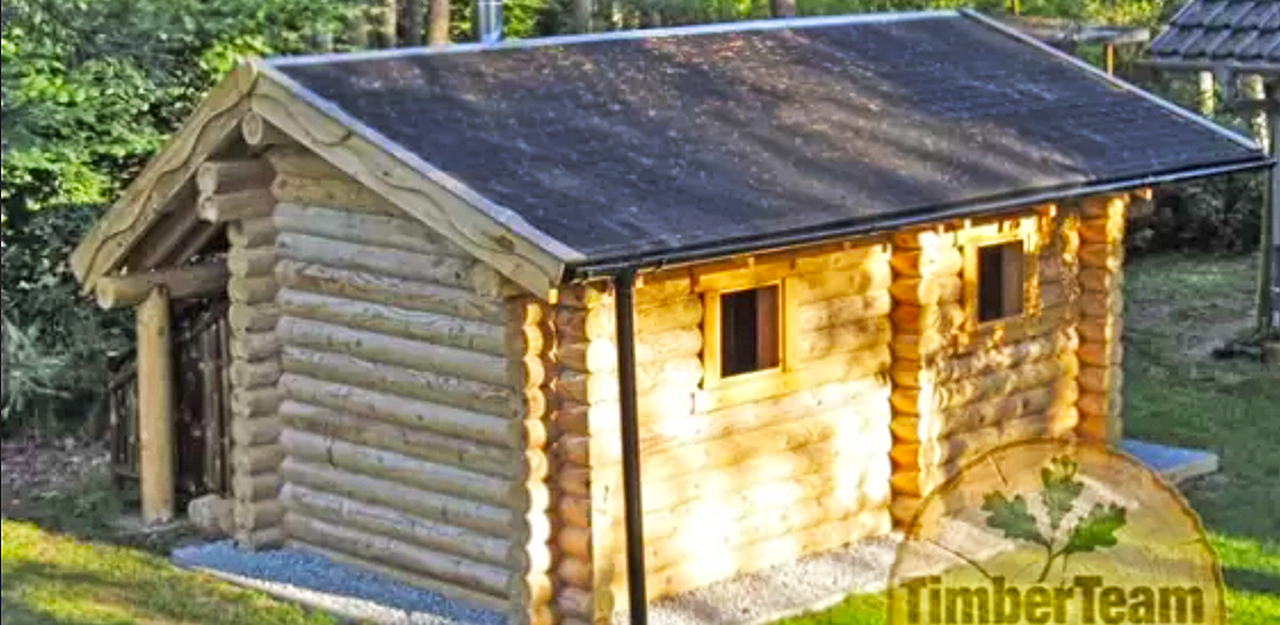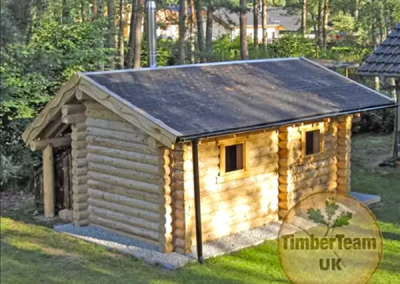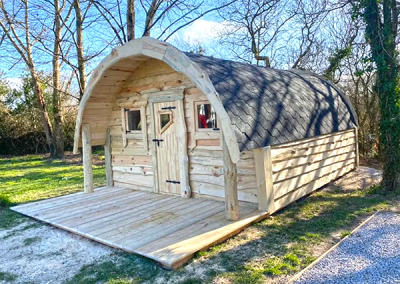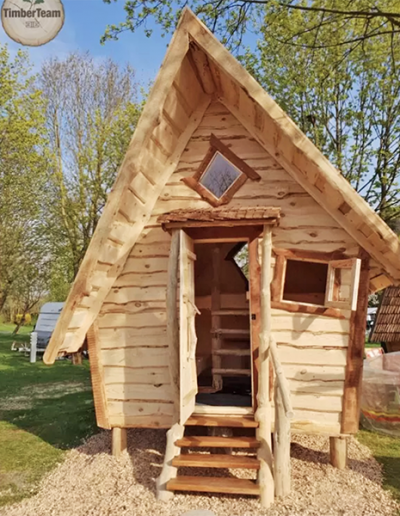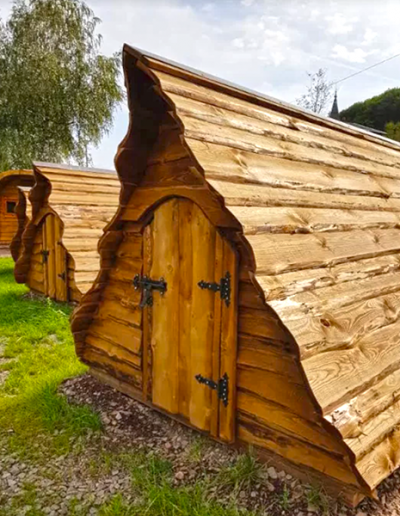HOW TO SET UP A GLAMPING BUSINESS
We’re always hearing from customers that glamping is the preferred option to camping; you still get to be close to nature, and it offers sanctuary from the unpredictable weather conditions here in the UK.
Glamping promises a break from the day-to-day of constant technology and urban grey without having to give up the creature comforts that we love. It’s the perfect blend. In fact, the global glamping market is expected to see a compound annual growth rate (CAGR) of nearly 15% between 2022 and 2027.
This means it’s potentially a very lucrative time to set up a glamping business. This will depend on the cost of starting and maintaining the business, which will vary depending on location and how you choose to set up the site.
For those who are considering it, and want to know how to set up a glamping business, our step-by-step how-to guide will help you from start to finish.
1. Do your research
Before you make any decisions, do plenty of research into every aspect of setting up a glamping business to make sure you’re in the best stead to create a successful site. It’s important to consider:
Location
Choosing the right location is key. Research different potential areas around the UK to find a location that ticks all your boxes at the right price.
You’ll want to think about:
- Costs for renting or buying land
- Nearby tourist attractions or things to do
- Natural features of the land: how secluded is it and how are the views?
- Noise and light pollution in the area
- Accessibility and public transport links
- Natural risks: is it protected from the elements? How will the area be affected by flooding or storms?
- Restrictions and regulations in the area
While it may be appealing to pick an area well-established for camping and glamping, such as Windemere in the North West or Snowdonia in Wales, their popularity may make your land costs higher, and competition could be fierce. Look into up-and-coming locations or places that are beginning to trend. This way you could find cheaper land that still offers good long-term returns.
Types of Glamping
With the ever-growing popularity of glamping comes the diversity of glamping styles. Look at existing market data before deciding which type of glamping your site will offer. You could review Google Trends or the number of hashtags on social media for different glamping types to see which are the most popular and which are gaining traction.
Some types of glamping include:
- Pods
- Hobbit houses
- Treehouses
- Bell tents
- Yurts
- Igloo domes
We have a beautiful collection of handmade, solid wood glamping pods for sale and have helped furnish sites across the UK, including Watermouth Holiday Park, Devon, Plough and Harrow, Kent and Stanford Farm, Shrewsbury.
2. Build a business plan
Create a robust business plan so that your business begins on strong foundations.
A business plan will help you work out the budget you need to get started, as well as ongoing costs for overheads and forecasting. These figures may be key when applying for planning permission.
Make sure you decide on your unique selling points (USPs) and value proposition: what makes you and your business unique.
Your plan should also include your target market. Once you know that, you may be better placed to decide on a location and how to furnish your glamping pods. For example, if your target demographic is families, you may decide to create a playpark onsite. If you choose to brand your site as ‘luxury’, you may want to budget for facilities like outdoor saunas or hot tubs.
If you’re not sure where to start, the government website has tools to help you write a business plan.
3. Look into planning and insurance
It’s important to look into planning restrictions before buying any land as it’s not always straightforward; the land may have restrictions that will take years to resolve. By following step one, you should already know the restrictions and regulations that apply to the area you want to use to set up your glamping business. That should make this step a little easier.
Once you have your site, you’ll need to start applying for your planning permit from the local authorities. Find out from your local council what paperwork is needed so you can arrange it as quickly as possible.
It may sometimes be difficult to get planning permission. In which case, it could be useful to:
- Contact a planning expert – they can advise you throughout the process
- Get local residents onboard – their letters of support are invaluable
- Find land that is already a campsite – these should already have the right permits
Once you have planning permission, you can:
- Apply for your campsite licence
- Get public liability insurance (in case of injury or accidents on your site)
- Carry out a general risk assessment of the entire site
4. Design your glamping site
After attaining the legal requirements, you can start to prepare the land for the glamping pods.
The best place to start is by planning and designing how you want the site to look, including where you’ll have toilet and shower blocks, and the number of pods you want. It’s also a good time to consider whether you want extras like a communal space or café.
Make sure to take into account what groundwork needs to be done to make these plans a reality. For example, if the land needs levelling.
5. Purchase your pods
You can now start populating your site with the pods of your choice.
There are so many styles of glamping pods to choose from, so we thought we’d offer some inspiration with our own designs below – you can even request multiple rooms and rustic, homemade furniture!
6. Design your glamping pods
When you’re designing the interiors of your pods, always make sure to cover the essentials first, such as:
- Beds and bedding
- Seating
- Lighting
- Storage
- Towels
From there, you can begin to think about nonessentials, the elements that add a unique touch to your guests’ stay.
Keep your target market in mind here, as well as your USPs. These should inform what nonessentials you add. For example, if you’re creating a couples retreat, you may choose to include chocolate strawberries and a bottle of wine.
7. Start marketing your glamping business
Advertising your glamping site is key to success so you can reach as many people as possible.
Create a website that’s easy to use and get a good booking system. You should also set up a Google Business Profile for your glamping site so you appear on Google Maps and can start getting reviews.
Build your online presence through social media. You can create profiles on Facebook, Instagram and TikTok and post regularly, or pay for advertising on these platforms.
Get listed on marketplaces such as Airbnb or Canopy and Stars.
8. Maintain your business
Now that your glamping site is open, you can focus on maintaining and growing your business.
Stay organised and keep on top of the admin of visits and bookings – there are holiday rental platforms you can use to help you if you need. You can also reduce some of your admin by automating certain tasks, such as emails to guests and customer reviews.
To keep your glamping business thriving, try to always:
- Offer something unique that sets you apart from competitors
- Respond to and action bad reviews
- Update guest experiences
- Look out for what’s trending and popular (e.g. creating co-working spaces for remote workers)
- Think about how to attract low-season visitors (e.g. pumpkin picking in autumn or an ice rink at Christmas)
While setting up a glamping business may have its difficulties, following our process will make it easier to achieve.
If you’re interested in getting glamping pods for your site but aren’t sure what to choose, why not get in touch? We’d be happy to discuss your needs and ideas to create your perfect pods.

